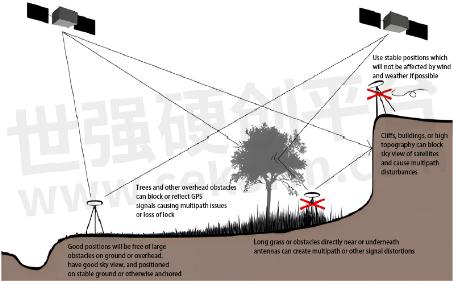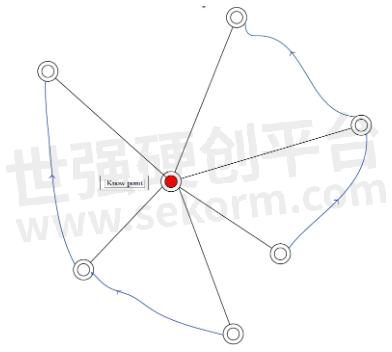Steps of How to Do Static Observation (1)




1 What is static observation?
Static observation is a commonly used method in geographical surveying and navigation for accurately measuring the coordinates of points. In static observation, a receiver remains stationary at the observation point and collects satellite signal data over a period of time. These satellite signals contain navigation information transmitted by satellites, and by analyzing these signals, the coordinates of the receiver's location can be calculated. Static observation typically requires a longer observation time to enhance measurement accuracy.
The advantage of static observation is its ability to achieve relatively high precision, but the trade-off is the longer observation time required and the need to ensure the stability of the receiver's position during the observation period.
2 How to choose an observation site?
Sites for static should be chosen for their suitability for observations. A good site should have the following characteristics:
✓ No ob Document instructions above the 15° cutoff angle.
✓ No reflecting surfaces (Lake, glass, etc.) that could cause multipath.
✓ Safe, away from traffic and passers-by. Possible to leave the receiver unattended?
✓ No powerful transmitters (radio, TV antennas, etc.) in the vicinity.

The computation of a baseline in data processing requires that the coordinates of one point (reference) are held fixed. The coordinates of the other point (rover) are computed relative to the "fixed" point.
3 How to Plan the Network?
A network consists of a set of baselines between network points. The design of the network will affect the results that are obtained from the survey. The following principles are recommended for good network design:
✓ Locate control of sufficient quality close to the project area
✓ Use good network geometry
✓ Build network redundancy
✓ Recommended networks
Recommended networks
➣ One receiver, the base receiver, is set up over a known point. The other receiver, the rover receiver, is set up over a point whose coordinates are unknown. They collect simultaneous observations at both the base and rover receivers for a certain period of time.

➣ Two receivers, the base receiver, is set up over a known point. The other receiver, the rover receiver, is set up over a point whose coordinates are unknown. When the first unknown point is finished, do not remove the base receiver and move the rover receiver to another unknown point.

➣ One receiver, the base receiver, is set up over a known point. It keeps continuous observation. The other receiver, the rover receiver, is set up over a point whose coordinates are unknown. They collect the observations at unknown points one by one around the base. In this way, it is more efficient, however, the network geometry and reliability are poor and precision is not high.

Recommended observation time
The recommended synchronization observation time is below. For the PPK base station, the sample interval must be set as 1s.

4 Static Field Step
✓ Set up the receiver and anchor legs so they will not move throughout the survey
✓ Measure and record slant height or bottom height
✓ Record station information, location, times, and antenna height

✓ Turn on the receiver, long press the static button to start the static. For different models of SinoGNSS receivers, please refer to the user manual for the buttons and LED indicators
✓ Long press the static button or turn off the receiver when you have completed surveys
Above are the steps of how to do static observation. In the next blog, we will introduce the methods of SinoGNSS K8 receivers to manage static parameters.
About ComNav Technology
ComNav Technology develops and manufactures GNSS OEM boards and receivers for high precision positioning demanded applications. Its technology has already been used in a wide range of applications such as surveying, construction, machine control, agriculture, intelligent transportation, precise timing, deformation monitoring, and unmanned systems.
- |
- +1 赞 0
- 收藏
- 评论 0
本文由翊翊所思转载自ComNav Technology Blogs,原文标题为:Static observation (1),本站所有转载文章系出于传递更多信息之目的,且明确注明来源,不希望被转载的媒体或个人可与我们联系,我们将立即进行删除处理。
相关推荐
CRU software instruction
Compass Receiver Utility (CRU) is professional Windows-based configuration software developed by ComNav Technology. Using the CRU software, you can convert the original observation data (cnb) into Rinex format; configure the parameters of the static collection of the receiver.
设计经验 发布时间 : 2023-06-29
How to Enable GNSS+INS System on ComNav K8 Series GNSS Modules
ComNav K8-series combines the strengths of both systems, integrated navigation can be robust in challenging environments and provides continuous positioning even during short GNSS outages, here are some examples of K8 GNSS+INS performance in different environments.
设计经验 发布时间 : 2023-05-26
How to start with SBAS mode?
Compared with general GNSS positioning, SBAS is capable of covering vast areas, increasing accuracy, and reducing position errors to less than 1m. At present, the world‘s leading powers have also developed their own satellite navigation systems.
设计经验 发布时间 : 2023-05-23
Mars Laser RTK from ComNav Technology- Changer in the World of Surveying and Mapping
ComNav released the second product in Universe Series GNSS Receiver - Mars Laser RTK. Innovation is renewed with the combination of conventional GNSS receivers and laser technology.
新产品 发布时间 : 2023-08-09
ComNav Technology‘s T300 GNSS Receiver: Decade Passed, Legend Still
Despite a decade of evolution, the T300 GNSS Receiver has managed to retain its timeless appearance. The classic design serves as a symbol of continuity and reliability in a rapidly changing industry.
产品 发布时间 : 2023-09-15
Effortless Precision and Unmatched Power: Mars Pro GNSS Receiver from ComNav
ComNav Technology Ltd.(ComNav) has introduced the Mars Pro Laser RTK. This product marks the third addition to the Universe Series GNSS Receiver, following ComNav Venus Laser RTK and Mars Laser RTK. The Mars Pro boasts enhanced performance and an accompanying OLED screen.
产品 发布时间 : 2023-09-07
电子商城
现货市场
服务
拥有中等规模的SMT、DIP以及成品组装产线;支持PCBA及成品OEM/ODM代工组装制造;在嵌入式系统、物联网系统等具备专业性量产制造的项目组织和服务能力。
提交需求>
模切产品精度±0.1mm,五金模精度±0.03mm,刀模精度±0.1mm;产品尺寸:10*10mm~45*750mm,厚度范围:0.1~0.7mm。支持麦拉、导热片、导热硅胶片、导热矽胶布、绝缘导热布、小五金等材料模切。
最小起订量: 1 提交需求>







































































































































































































登录 | 立即注册
提交评论